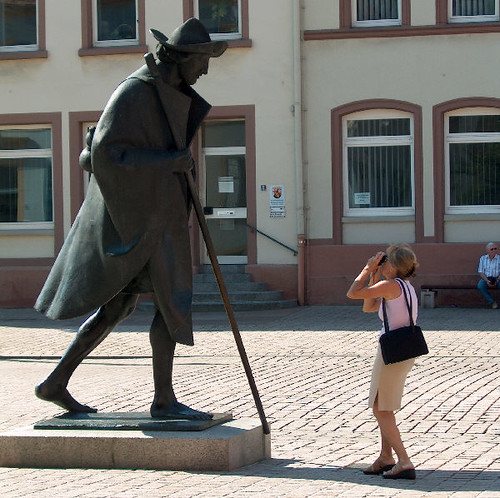
Driving down the Rhine out of forest, into a large agricultural valley to Speyer, we found the town much smaller than we imagined. Across from the big Technik MUSEUM SPEYER we found a large parking lot and settled in to explore the city.
Walking up and down the main street of Speyer, Mark again felt that it, as so many of these towns, has been "Disneyfied". He had this feeling in Freising as well. The downtown "Main Street" of the old town bustles with people as a tourist attraction. Normal commercial activity happens here also, as in a "mall", yet the old towns often seem restored in a manner that continues to make Mark uncomfortable. It's all the same as before the war, except that many of the stores were owned by Jews who were murdered…, yes, we'll see a monument to them, later, off to the side of "Main Street" As if the townsfolk don't want to detract too much from their good feeling of the present. Is that harsh? Sorry.
On the "Main street" of Speyer (actually, it's called Maxmillianstrße) we noticed a large, fairly modern statue called Jakobsweg, of a pilgrim on his way to Santiago de Compostella. We had initially thought maybe it related to the Crusades. We saw a number of people photographing it ,as here from the Web. We had been discussing the "Interesting Thing of the Day which Joe Kissell, one of Mark's computer colleagues, publishes" This pilgrimage to Santiago de Compostella had been another of Joe's stories.
At the Info office we saw a poster about a medieval mikvah and the old synagogue site.
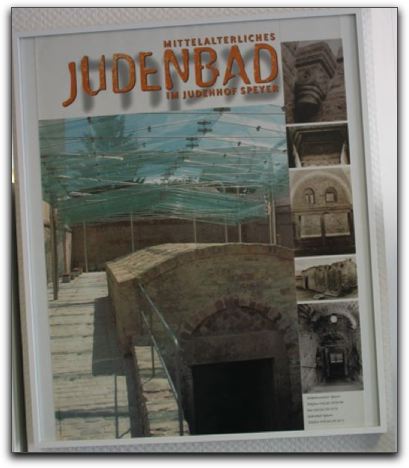
The Speyer mikvah, a ground water ritual bath, served as the model for the Worms and other local mikvaot. The mikvah attracts about 80,000 visitors a year and was restored very nicely as a site in 2001. Owned by the city of Speyer, it is run by a private organization. This mikvah was first mentioned in 1128, the oldest of the mikvaot north of the Alps. The Medieval Jewish community of Speyer (the one that created this mikvah) ended in 1529, exactly how is not known but Jews returned in the 19th century. After that, the community always remained small, at its highest it had 539 members. It built a synagogue nonetheless which was destroyed in 1938.
The medieval mikvah and synagogue complex:In the courtyard:
- This wall-sized reconstruction on the side of a building at this location (though we doubt that's the building).
- The niche for the Torah in the synagogue.
- The entrance to the mikvah (the view in the poster is from the right (north) side of the building looking in (south)).
- The mikvah itself sits beneath this structure.


The water (fed by groundwater from the Rhine) does not look particularly inviting and we wondered how they warmed the waters:
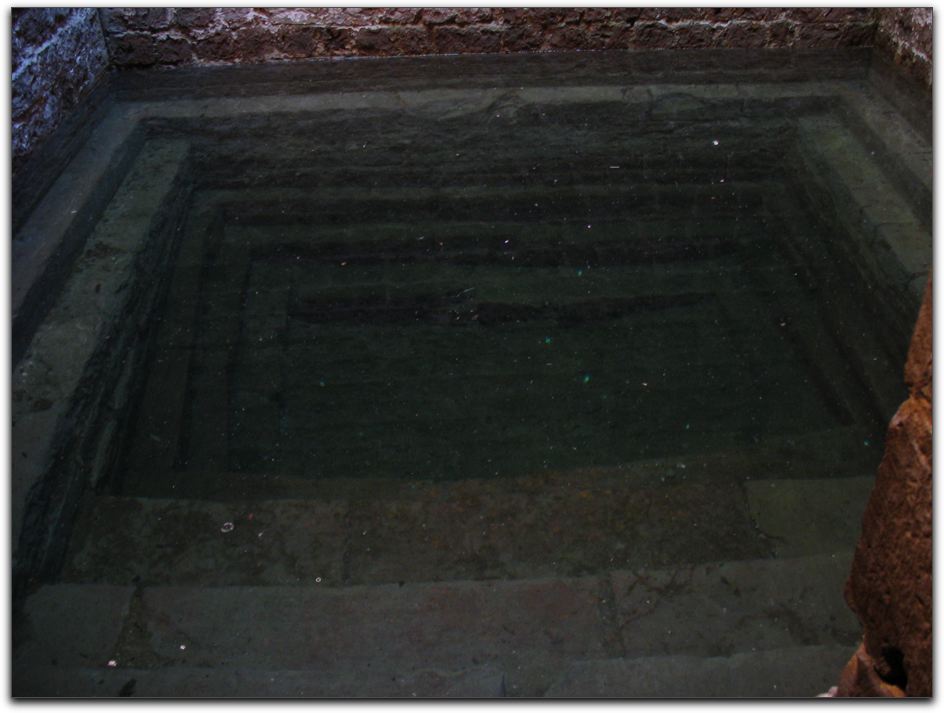
This is as close as this rabbi will get to the waters of (at least) this mikvah:
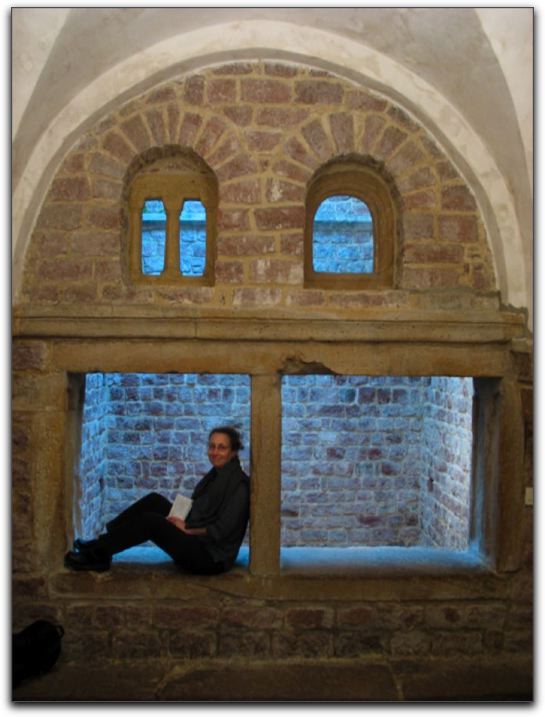
From inside the ruined synagogue you can see the niche for the Ark:
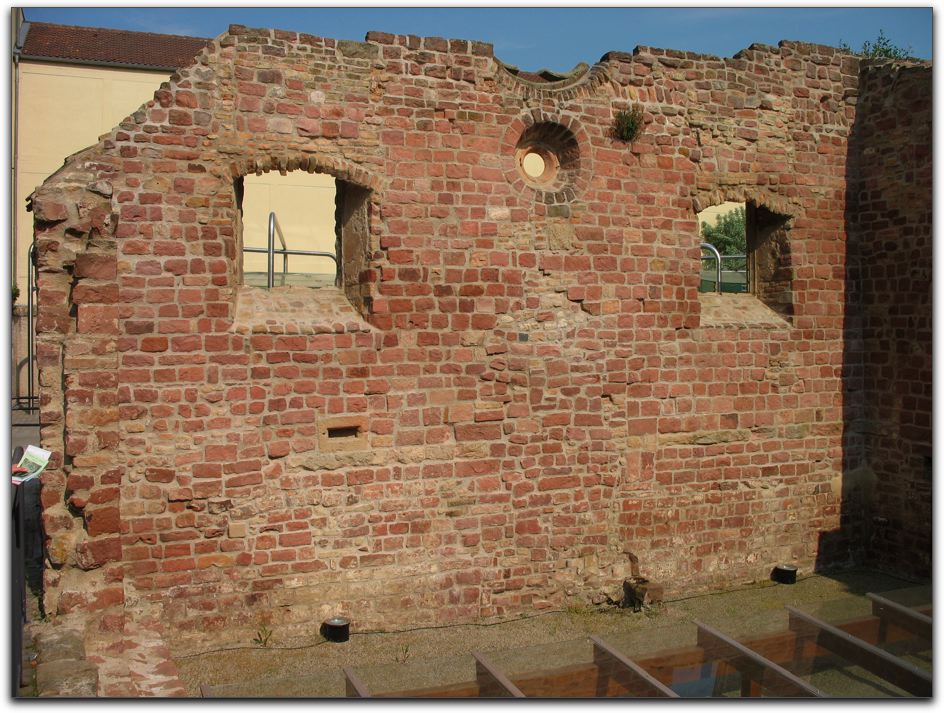
When we left the ruins of the medieval synagogue complex, we walked past the more recent "Judengasse":
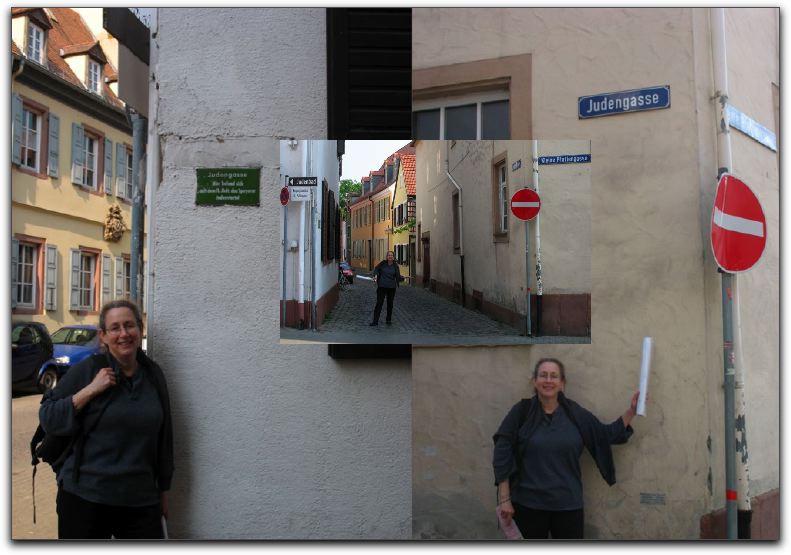
to the location where the modern synagogue destroyed by the Nazis had once stood. There we found these plaques and monument/sculpture.



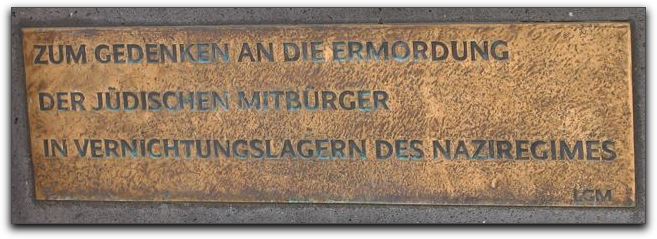
One of the most important centers of Jewish life of a thousand years ago, remains only a series of ruins and plaques, though the teachings still echo for Judaism today.
Shortly after our arrival in Europe we received a lovely email from Nisus Writer user Ingo Dierck who had heard about our journey from the Nisus Newsletter:I visited your website and learned that you are going to pass just a few meters from my home between Speyer and Worms. So feel yourself sincerely invited to come over here! I could perhaps show you a bit of the Jewish evidence which is not always easy to find. There are a few Jewish cemeteries and synagogue buildings around here or, I should better say: ruins of those buildings, as you know. It was a region of quite rich Jewish life and culture since the Middle AgesWe kept in touch and, as we approached, Ingo repeated his invitation, including dinner and a place to park the van in his driveway... with electricity and water, no less!
We arrived in Dannstadt, a village a bit to the west of Speyer, to visit Mark's Nisus writer contact Ingo Dierck...
To quote again from Brecht (Some Stories About Herr Käuner):Herr Käuner preferred city B to City A.
Why?
....
In city A, they invited me to dinner.
But, in city B, they asked me into the kitchen.
in time to help with the correct peeling and preparation of the spargel (white asparagus). We met his wife Isabelle (from Bretagne) and their daughters, Sophie and Marie.
We shared dinner of white asparagus, spring potatoes and fresh rhubarb pudding.
We talked late into the night, past our usual bed times.
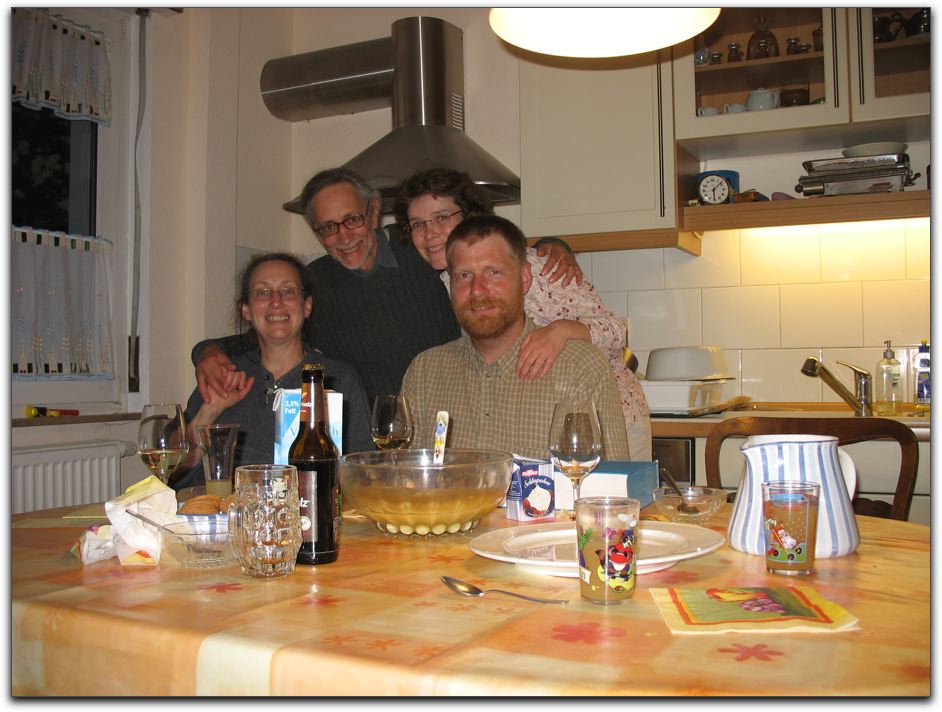
We had a lovely evening sharing stories, ideas, and concerns with them, very sweet and lovely folks. Ingo is a historian, now working in desktop publishing (with the flexibility to take care of the girls) and Isabelle works in import/export.
The following morning, after we enjoyed a delicious breakfast of cheese, rolls, jams, almond yoghurt, and nutella (!!), Ingo kindly took us to see the local Jewish cemetery in Fußgönheim, maintained now by the local Protestant Church; the former Jewish synagogue site in Fußgönheim; and the former synagogue in Deidesheim. Ingo is working on a history of the town of Dannstadt and plans to include some basic info about Jews in the area. He has graciously continued to supply us with details and publications about Jewish life in "the Palitinate".